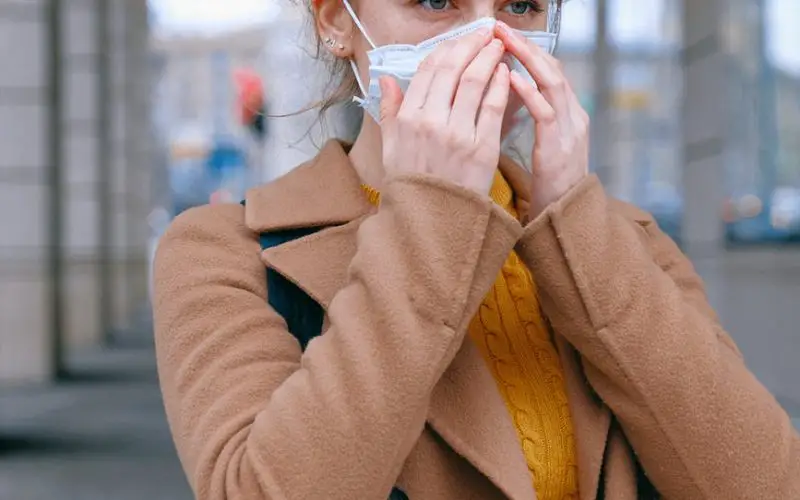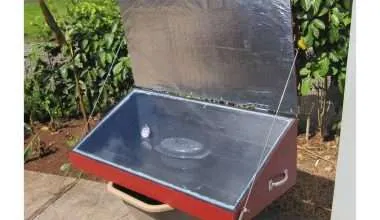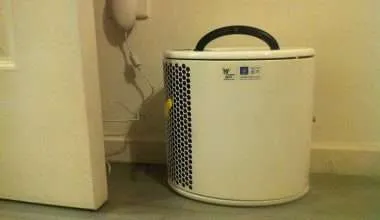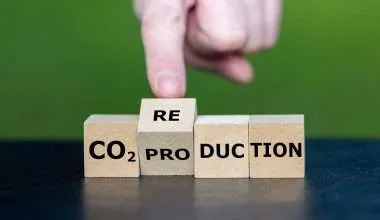Table of Contents Show
Industrial revolution has caused people to pollute the Earth like never before. There are only very rare locations left on earth which have not been subjected to being polluted in one form or another.
Pollution is of many kinds. Some can be in a visible form, like illegal dumpsites on the outskirts of large cities or pieces of plastic floating on the beaches. Some can be in a hidden form which can be the most dangerous form; especially in the air that we breathe on a daily basis.
Clean air is what we all are dependent upon. However, our activities are constantly releasing such particles in the atmosphere which are toxic and contaminate the air.
Polluted air is costing us Lives (Major Effects of Air Pollution)
Low quality air has become a very serious issue, so much so that the scientists record a large number of deaths due to the increasing effects of air pollution.
In fact, more people die from the air being polluted than from malaria or tuberculosis.
Some cities in the world shut down at times to protect its people because the air gets too polluted and makes it impossible to function.
An example of air pollution affecting humans; In China, some days the air is so polluted that it has the same effect on people as having smoked 60 cigarettes in a day.
Another alarming record comes from New Delhi where the air is so polluted that the safe air quality levels are surpassed by 20 times on a day when thick smog wraps around the entire city.
Delhi’s children develop irreversible lung damage during their childhood according to a study by Chittaranjan National Cancer Institute.
To show you a better image of the severity of global pollution; an animal present in the remote Arctic contains in his body one of the highest level of pollutants of any organisms on this planet.
It is said about polar bears that even those who are present at a remote place in the world are affected by pollution created anthropologically.
Many countries have enforced stricter regulations to prevent air pollution and its emissions. However, there is still much improvement required on an individual level for which there is a lot we can do.
We all have a role to play in creating a healthy living environment for all as we are the ones destroying it. Therefore, the key to having a healthy life is to adopt measures which prevent us from polluting the air.
Simple ways of Reducing Outdoor Air Pollution
In our modern lifestyle, the only ways to reverse our negative actions are being aware about the potential negative effects of air pollution and changing our habits.
Initiatives for this cause shall be taken by the authorities, but the alteration of habits on an individual can still make a mighty big impact. It might not make a global impact.
Nevertheless, it will positively impact your local area along with having a direct impact on the environment where you live.
The following list will help people improve the quality of their lives by addressing the problem of air pollution. This will be done by learning about the ways to reduce and prevent air pollution.
1. Minimize Air Pollution from Cars:
One of the biggest emitters of nitrogen oxides is road transportation.
Oxides of nitrogen present in the air are closely monitored by meteorologists due to them having adverse effects on human health.
These damage the lung development and overall life expectancy of humans. The harmful emissions can be felt in the air in cities with high traffic (I just felt it cycling through a busy street today!).
Diesel cars and small vans top the list of dirtiest polluters in vehicles. Being a driver you can reduce the pollution from your car by following simple rules:
- Do not idle your vehicle when you are out for a drive. Hybrid cars don’t run on fuel when you’re idling so shift to those. Or better yet, completely electric cars.
- Combine trips by driving less. Carpooling or car sharing is a great idea to start with. Lunch can be brought at work rather than going out and eating during lunch breaks.
- Do not drive fast because that releases more emissions in the atmosphere.
- If it’s possible then don’t drive during rush hours. Because the increased idling makes you tired and the car releases higher emissions on average.
- While buying a new car, make sure the car does well on the emissions test.
- Move away from diesel cars. Diesel cars emit the most nitrogen oxides, especially when comparing to petrol cars.
- To choose the cleanest option, go for a hybrid or all-electric car. These cars have a smaller ecological footprint than conventional cars. Although it is important to know that some emissions are involved. These emissions are from the power plants that supply the electricity to power your e drive.
- Make sure to change your air filters regularly. Improves fuel efficiency and reduces emissions.
- Keep the tires properly inflated so that the car runs smoothly without needing to burn more fuel.
By following these you will definitely be able to help reduce (if not stop) air pollution caused by cars.
2. Walk, bike or use public transport to reduce air pollution
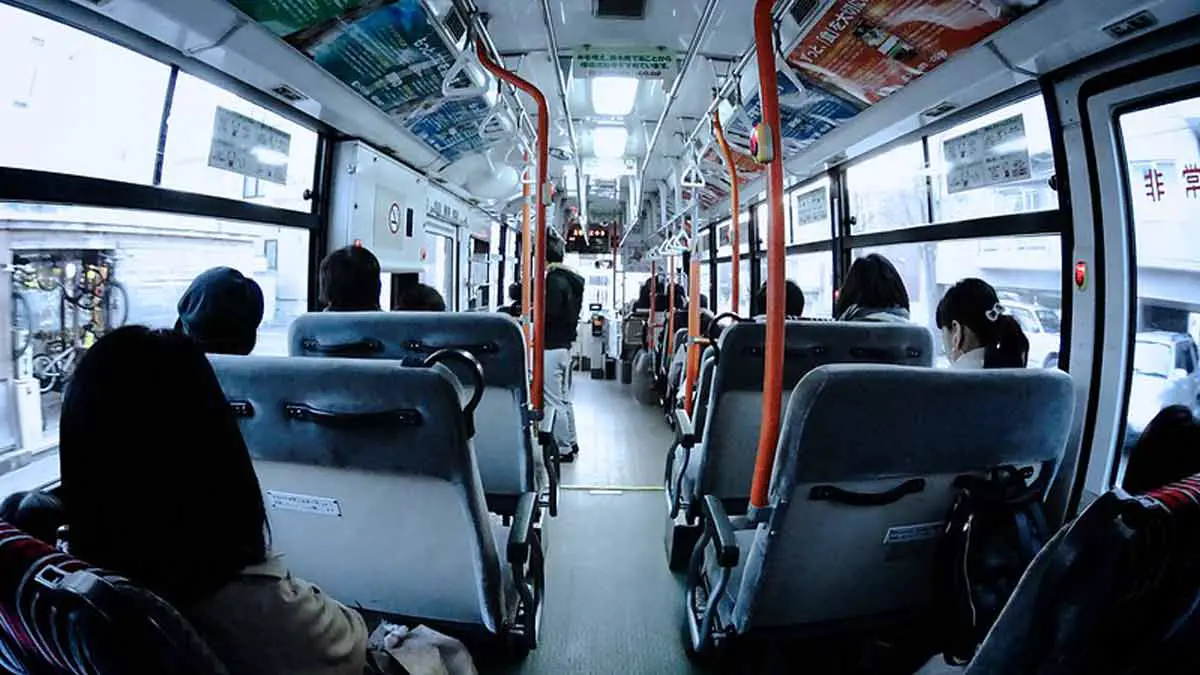
If you have an option, take public transport to get to work. Many cities have invested a lot on public transport so that people can benefit from them.
Using public transport would mean that there would be fewer cars on the road. Many governments also encourage people to use public transport and offer great benefits upon usage.
The common advantages that are offered in public transport are cheap long-term fares, shorter times to reach destinations (especially electric trains), less waiting time, and free fares for certain times and/or for seniors and students; and also punctuality.
For example, In Vienna, Austrian capital, they offer a yearly ticket to their extensive public transport network for only 1 Euro a day. It means that if you are a yearly card holder, you can travel for 1 Euro as much as you want in a day.
In Germany, students can travel for free on the weekends and after 6 pm daily. In many cities the government invests upon electric buses and other modern vehicles to reduce the carbon emissions in the air.
Walking or riding a bike to work has its own benefits as well. You would be able to reach your work with lower traffic stress and can take shorter routes to get to work faster.
Both of these activities (walking and riding a bike) can contribute to maintaining a healthy lifestyle and improving your health and confidence.
However; while riding a bike or walking, you should be careful in order to take the route which has less pollution in the air rather than roads with heavy traffic so that you don’t breathe in carbon emissions.
3. Save energy and make sure you use energy efficiently
A report released by the International Energy Agency in 2016 has a key statement that “air pollution is an energy problem”.
Other scientific papers also have a similar view. For example, a study was published by International Journal of Environmental Research and Public Health which listed a myriad of health problems arising from air contamination because of the combustion of fossil fuels.
The burning of fossil fuels release harmful air pollutants such as:
- Nitrogen oxide
- Sulphur dioxide
- Mercury
- Black carbon
- Polycyclic aromatic hydrocarbons
- Carbon dioxide
- Particulate matter
All these pollutants have a negative impact on human health and the environment. Therefore, proper consumption of energy matters.
The decreased consumption of energy would lead to less expenditure (lower spending on utility bills) and most importantly benefit your health.
Saving energy whether at work, at home, or while travelling; you would be reducing the production of many pollutants as well as the carbon emissions that cause global warming and pollute the air.
Some strategies to lower energy consumption are:
- Increase energy efficiency of your home: Make sure you use your energy efficiently and not waste it in any way. Use energy-efficient electric products.
- Minimize the use of air conditioners: The air conditioners should only be used in summers when necessary. Air conditioners require more power than fans. Open windows at night to cool down your room.
- Use appliances smartly: Use your washing machines and dishwashers only when they are full and if possible use them at night. Also, invest in Eco-friendly appliances that conserve utilities like water, gas and electricity.
- Switch to renewable energy: They are considered to be much cleaner versions of power generation. There are many affordable options due to technological advancement of renewable energy for residential use.
4. Take good care of your wood stove or fireplace
Make sure your fireplace is well-maintained. When the fuel wood is burned in the wood stoves, the incomplete combustion releases particulate matter of very small size.
These tiny particles are very dangerous as they can easily get into your lungs; and because they are so small they can easily get into your bloodstream too.
The harmful gases released from the wood stoves and fireplaces are:
- Benzene
- Carbon monoxide
- Nitrogen oxides
- Aldehydes
What is the amount of emissions your stove produces?
The amount of emissions released by your stove depends upon the following factors:
- The efficiency of the wood stove: The new models are more efficient than the old ones which are not properly maintained. The old wood stoves release 8-6 times more air pollutants than the newer models. You should use professional help while installing the stove. It would ensure that the stove will have better performance and efficiency.
- The type and the condition of fuel is burnt: Dry firewood is preferred over humid wood as it is considered better in terms of pollution. Dry firewood emits fewer air pollutants. In order to restrict the release of other toxins in the air, don’t burn wood with paint or glue or any other coating perhaps.
5. Recycle and Buy Recycled products
Think about all the complex processes which have to go through in creating new items from scratch.
At first, you need to start with mining for raw materials; then these raw materials need to be transported, cleaned, processed and then treated till the point they are ready to be transformed into the desired products for you to buy.
Every stage of manufacturing creates emissions of pollutants in the form of particles, chemicals, heavy metals and greenhouse gases.
Further newly developed energy is also used to make new items from the raw materials, which increases the environmental footprint as compared to the products which are made from recycled materials.
Re-Manufacturing the same products via recycling uses much less energy and produces lower pollution. This is along with saving costs, which the company can use to improve sustainability.
6. Consume less and choose sustainable products
A study published in 2017 stated that 22% of premature deaths happen by air pollution in counties producing goods for exporting to other developed countries.
As the world loves cheapest gadgets from China; actually these cheap gadgets have killed more than 100000 people in Chinese towns where the factories of such gadgets are located.
The environmental pollution is high in these regions because of the weak or lacking emission restrictions by the government.
The air it pollutes is which we all breathe from as long as we live on this planet. Only major afforestation plans could offset such levels of pollution.
The individual consumption pattern affects the pollution globally. You don’t have to travel to china in order to contribute to the pollution, the things you buy represent whether you encourage polluting businesses in other countries.
By consuming less and making an informed eco-friendly choice before you buy a product is the best you can do for saving the environment and the quality of air.
Support local companies which are committed to sustainable manufacturing processes and reducing pollution in the air by buying their products.
7. Eat local and organic food, avoid meat
Agriculture is the main emitter of ammonia and other nitrogen containing compounds such as Nitrous oxide or Nitric oxide.
Another way of emitting pollutants like high levels of methane is livestock. Livestock releases greenhouse gasses like methane as well as non-methane volatile organic compounds (VOCs).
Fertilizers and agricultural pesticides create organic pollutants, such as hexachlorocyclohexane, hexachlorobenzene and pentachlorophenol in the atmosphere.
Organic agriculture is not exactly emission-free, but the amounts of pollutants are low.
How does organic farming help prevent outdoor air pollution?
- The nitrogen input to organic soil is very low, which is why the nitrogen compounds releasing in the air decrease.
- Crop rotation helps with the preservation of nutrients in soils where they are used by the plants and are not wasted in the air.
- The aerated soil has improved methane uptake.
An important step to take is reducing your consumption pattern of meat; you should eat less meat. By eating less meat you would help to lower air pollution and this will also benefit your health.
8. Grow your own food and eat seasonal products
Nowadays, It is very easy to get access to vegetables and other foods from all over the world.
All you have to do is go to the supermarket and you will find all kinds of toxic fruits, vegetables and spices.
Having so much variety to choose from is good, but that also comes with a cost. The cost in this case is the pollution(the large carbon footprint) that is created in the world by transportation of these products.
These products are imported and exported and are travelled long distances before they reach your supermarket. Think about all the pollution that is created by transportation.
Growing your own food gives you the benefit of having a nutrient rich diet which is not affected by the harmful emissions. It will also ensure that you are consuming a truly chemical-free product.
If you are unable to grow the fruits and vegetables for any reason then you should at least make sure that you are eating local seasonal products which are native to your area to ensure its richness and freshness.
9. Plant Trees
Trees help to reduce air pollutants in the air significantly.
Trees remove around 850-2000 tons of harmful particles from the air every year in urban areas of London Greater Authority! – Researchers from the University of Southampton.
Moreover, the news from the USA is that trees absorb up to 26,000 tons air pollution in an year within Greater Kansas City area!-U. S. Forest Service.
Other than removing air pollutants, the trees also decrease the levels of nitrogen dioxide, sulfur dioxide, carbon dioxide and monoxide, ozone and dioxin.
The trees which have large leaves are considered as the most efficient air cleaners, for example oak and elms.
Trees which are planted alongside the roads or on boundaries also slowdown the polluted air carried by the wind. They act like a protective shield. Thus they help prevent the spreading of air pollution over large areas.
Moreover, trees also help to reduce the summer temperatures by a few degrees. The slightest reduction in temperature can lead to a big difference in keeping the air clean. The cooler temperature also helps us and our wellbeing.
10. Raise awareness and be interested in local matters
The first step to fight air pollution is to increase the knowledge of you and the people around you, to make them aware about the problem of air quality in affected areas.
Most of the ways on dealing with the air pollution are rooted in the consumer behavior.
By making the right choices, your initiative can benefit your friends and family. This can be a way to be one of the initiators in your area for a bigger change.
Simple ways of Reducing Indoor Air Pollution
Most people believe air pollution is linked to poor outdoor air quality, when in reality indoor air is, on average, two to five times more polluted than outdoors.
This happens mostly because there’s reduced air circulation indoors than outdoors; and because of this the toxins, dust particles, vapors from cooking and furniture dyes are accumulated inside our houses.
There is a higher risk from air pollution indoors because we spend more time indoors, breathing the polluted air repeatedly.
It is estimated by the World Health Organization that 30% of the diseases are because of indoor air pollution.
You should be more cautious about the pollutants present indoors. We have already looked upon how to reduce outdoor pollution and now we shall look upon how to improve air quality in your houses and offices.
1. Keep air-purifying indoor plants
Keeping houseplants that clean the surrounding air is a very elegant solution to improve indoor air pollution.
Most of the houseplants have the capability to mobilize air pollutants indoors exactly like trees. They would also refresh the air by producing oxygen and absorbing carbon dioxide.
Some examples of top indoor air-purifying houseplants are:
- Peace lilies
- Spider plants
- Snake plants
- Weeping figs
- Elephant ears
- Rubber plants
- Bamboo palms
- Heartleaf philodendron
These indoor plants can absorb compounds such as, xylene, toluene, octane and carbon monoxide.
2. Open your windows
Opening your windows once a day would replace the polluted indoor air with fresh air from outside.
Air circulation is very important even if it is for shorter time periods because it lets the accumulated toxins out and decrease the humidity that is created by activities at home.
One of the common issues of insulated houses is that the indoor air is not exchanged by the outdoor air. The heat and energy is preserved inside, it would not be a healthy circumstance.
Therefore, don’t forget to open your windows to let the air circulate.
3. Use natural products and non-toxic household cleaners
Whenever you purchase a household product, make sure it is the greenest and cleanest product without any harmful and polluting chemicals.
Many of the air cleaners, detergents and paints have toxic substances in them which easily evaporate into the air and pollute it.
These chemicals not only pollute the indoor air but also can be detrimental to your health and that of your pets. The symptoms include; irritations, nausea, asthma, liver and kidney failures.
To contain yourself from the exposure to these chemicals, choose the products which have natural substances in them and do not harm you directly or pollute the indoor air.
The few tips to stick to when choosing a product are:
- Go for no-VOC or low VOC paints, glues and finishers. Use a brush to paint rather than a spray.
- Use essential herbs and flowers instead of chemical-filled air fresheners.
- Don’t use chemical-filled products, instead use eco-friendly cleaning products.
- Don’t use perfumes at all or use them when necessary.
4. Use Essential Oils
Essential oils and plant extracts are used for many purposes such as cleaning, purifying and to freshen up indoor air.
They are used as an alternative to many chemicals and synthetic products because they are Eco-friendly and healthy.
If you use a high quality essential oil it would not just produce a good scent but also provide health benefits as they contain many complex natural compounds in them.
You can use even use essential oils to make your own homemade cleaning products and personal care products. Some essential oils used for hair and skin supplementation are rose, cedar-wood and thyme.
5. Test your home for Radon
It is an invisible gas which is odorless but radioactive. It seeps naturally from the soil. It is the product of radioactive decay of uranium which is naturally found in all the rocks of the world.
Most houses are not properly built on highly permeable soil and their foundations are not properly sealed which is why most of the air which comes indoors is from the ground. This could lead to the accumulation of radon in the indoor air.
The second largest cause for lung cancer after smoking is radon. So it is very important to have your house tested for it. The testing is very simple and inexpensive. You can even get your own radon tester kit.
Additionally, you should also keep an air quality tester to make sure that air quality inside your home is not below safe levels.
6. Do not smoke indoors
Smoking indoors causes many substances and toxins to remain indoors for a long time. Passive smoking to a cigarette smoke causes serious health problems for the members of the house.
Some of the compounds found in smoke which deteriorates the health include arsenic, lead, ammonia, carbon monoxide, nitrogen oxide. Smoking in a confined space leads to the levels of these compounds to rise more than the safe limits.
7. Keep indoor humidity low
Many activities we do at home makes our rooms damp. Hundreds of bacteria species thrive in humid environments.
Keep your homes as dry as possible. This can be possible by opening windows to let the outside air circulate inside your house. Stagnant air retains all the moisture from the house. You should open windows for ventilation at least once a day.
Use exhaust fans and normal fans to reduce the level of moisture. While showering keep the door closed and let the fan remove the moisture after you finish showering.
Use a dehumidifier to reduce the humidity level at your home, especially if you live near to the sea.
8. Vacuum clean with HEPA filter
Vacuum cleaners help to contribute to indoor air pollution. Vacuum cleaners which are without proper filters would allow small particles to escape back into the air.
To make sure this does not happen, use a vacuum cleaner that has HEPA (high efficiency particulate air). These filters are able to catch 99.7% of the particles in the air.
9. Keep your home dust-free
Many researchers claim that most of the dust present in households is a mixture of organic matter and particulate matter from the outside air. You can’t prevent the dust from making your way into your home, but you can minimize the chances of it by regular dusting and cleaning.
You should follow this especially if you’re prone to allergies.
10. Use air purifiers
If your house is at a location where outdoor air is of poor quality, then you should use an air purifier to clean indoor air.
On days when the outside air is much polluted, you can use the air purifier to minimize the risk of breathing polluted air. Make sure the windows are closed shut when you turn on the purifier.
